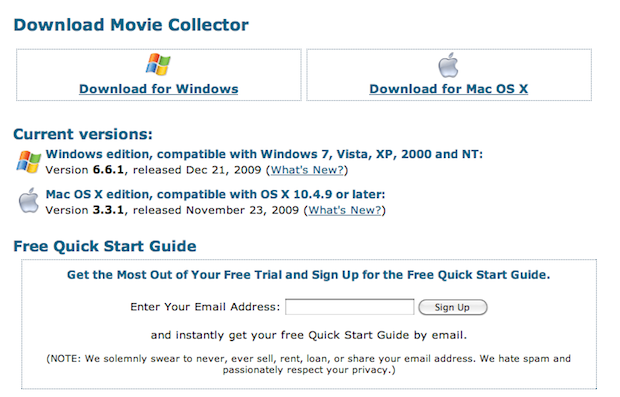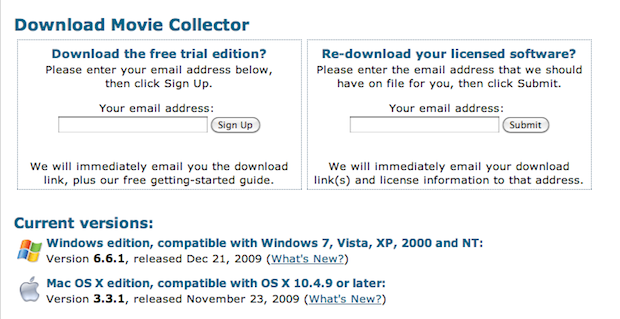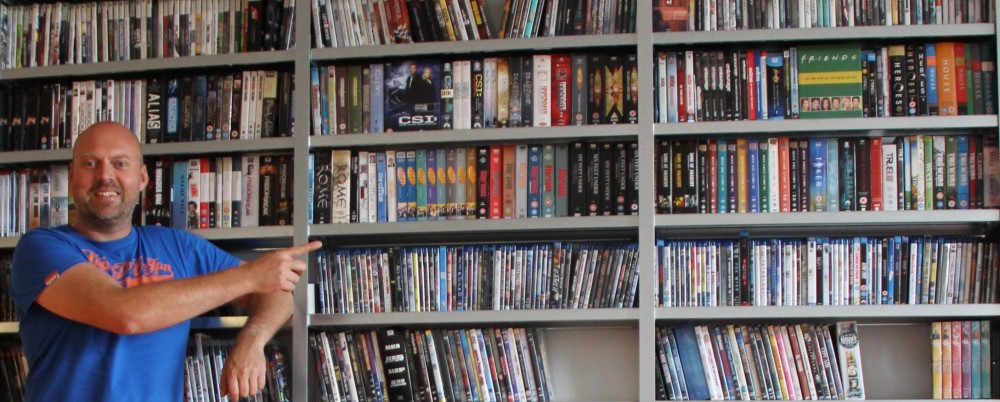 Offering a free trial edition is an important tool to sell more software, I think we can all agree on that. But how do you make that trial editon available to potential customers?
Offering a free trial edition is an important tool to sell more software, I think we can all agree on that. But how do you make that trial editon available to potential customers?
Do you let them download the trial using a publicly available download link on your website? Or do you force them to give you their email address first (mandatory sign up)? Or maybe a softer, optional sign up?
If you want as many users as possible to evaluate your trial version, it makes sense to make downloading it easy as possible, no barriers at all.
On the other hand, having the email address of your trial users lets you follow up with them, hopefully increasing your chances of converting them into customers.
Which approach will bring you more profits?
Public Download Links or Mandatory Sign Ups?
As always, there’s only one way to find out: an A/B split test.
The Collectorz.com situation
Of course, testing any form of sign up approach only make sense if your going to follow up, either automatically or manually. Otherwise the reduced number of downloads will only hurt your sales.
At Collectorz.com, we have been experimenting with autoresponder (AR) follow-up sequences for over a year. We are currently using a simple, but effective 4-message sequence, that is being sent out to people signing up for the free trial:
- Day 0: Welcome, $5 discount coupon, download link, link to Getting Started guide, testimonials.
- Day 2: Buying guide, standard vs pro, barcode scanners, iPhone app, testimonials.
- Day 6: Subscribe to newsletter invitation, benefits of cataloging your stuff, testimonials.
- Day 30: Outright invitation to buy, more testimonials.
Up until 2 weeks ago we used the soft approach, with the sign up being sort of optional. That is, our product home pages only showed a sign up box, no download link, but on the Download page one could still download the trial without signing up. (the Download page could be reached through our navigation bar at the top).
I have always been procrastinating to go for the mandatory sign up only, because:
- I was afraid I might loose sales.
- I wasn’t sure my AR sequence was good enough.
- I didn’t have a solution for existing customers yet. I mean customers who already own a license and are just looking to (re)download the latest version of their software.
But I have been optimizing my ARs in the past year, plus a few weeks ago I implemented a smart download link request form for existing customers.
So I figured, let’s go for the big test.
The test
In the past 2 weeks have been running the following A/B split test:
Version A
As described above. The product home pages showing a sign up box only, the download page allowing direct download, plus offering an optional sign up for the Getting Started guide:

Download Page - Version A
Version B
The Product homes as in A, but the download page having a Sign Up For The Trial box only:

Download Page - Version B
Note that in version B i have added the Download Link Request box for existing customers.
The results
These are the results after running the above A/B split test for 14 days. In these two weeks, the test counted 69,000 first time visitors and just over 600 sales.
- #Downloads: down by 33.6%
- #Sign Ups: up by 20.7%
- #Sales: up by 3.4%
- Average First Purchase Value: up by 13.5%
- Profits: up by 15.4%
Interestingly, the sales of the B group lagged behind during the first few days of the test, then began catching up fast, to end the test as the winner. The effect of the AR emails at work, i guess.
Another fact to notice is the most of the gain in profits is caused by the increase in the First Purchase Value, not so much by the number of sales. Maybe the AR is helping to build trust, convincing users to include a barcode scanner with their purchase, or to buy multiple cataloging programs in a bundle?
My advice?
First, don’t try this at home! At least not until you have a tried and tested AR follow-up sequence in place.
And even then, your results may vary. My customers are home users and my guess is that these people are more likely to willingly provide their email address. If you are selling to more tech savvy users or to businesses, your download counts may drop too much to be compensated by better AR conversions.
But then again, business users may be more serious about evaluating software and therefore perfectly willing to let you email them more info. And if you’re in a “low volume, high ticket” business, you could even send personal follow up emails manually. Or here’a a crazy idea, ask for their phone number and just call them.
Anyway, for us a mandatory sign up process seems to be workig. And I haven’t even implemented all our AR ideas yet. Obvously, that is at the top of my to-do list now.

I see your mac version is at v3 and your windows version is at v6. Don’t you think that might be off-putting for Mac users, sending the subliminal message that the Mac version isn’t as good as the Windows one? Can’t you harmonize the version numbers?
Very good point. I was indeed planning to bring both to version 7 with the next major upgrade. In fact, we’re working on the first version of Comic Collector for Mac OS X, and I am planning to call it 4.0 🙂
Thanks for sharing your experiences, this is very interesting. I have a few questions: How long is the evaluation period of your software and does your software have a hardstop? Do you know when trail users are converting their product (so how many days into their trail period)? In most cases you see sales immediately after installing the software (that would explain the drop in sales you saw in Case B, because you had 1/3 less downloads) and you see a huge bump in sales when the evaluation period expires and the product stops working. If your products do have a hardstop, it would be interesting to do this analysis again after let’s say 45 days after you started the A/B test.
Hi Edwin, good to see you here.
Our software does not use a trial period. The trial editions are limited in the number of records in the database (e.g. 50 DVDs for Movie Collector). Some users run into this limit the first day (can be within an hour). Which is a good thing because it encourages impulse purchases.
Overall, most of our users buy the first day or 2nd day. The AR follow-up sequence helps to convert people on later days (who may have forgotten about downloading it).
Nice posting, thank you!
As for returning customers, why not let them download by license key authorization like this: http://full.phraseexpress.com
On this form we deliver the suitable product version and variation based on the license key.
As a side note I would recommend to offer the Mac/Win version depending on the UserAgent. You can still offer the opposite version as a side dish but for the vast majority the suggested OS version may fit fine.
I use both OS and I always appreciate to find the suitable version offered prominently.
Again, thanks for sharing your experiences.
Hi Michael,
We have found that existing customers looking to re-download their software tend to have lost their license information too 🙂
So that is why we opted for the authorization by email address.
As for showing Win/Mac detection by User Agent: we have done that for screenshots for a while. Currently we are showing both side by side. But I like the “opposite version as a side dish” idea.
I agree. We offer a license key retrieval that is sent to the email address. However, you are a Pro and most probably are aware as well that customers also forget which email they have used. 😉
By the way, as you are here, it would be great if you would post about marketing to Mac vs. Win. How do the customers differ? Are Win users more tech savvy? Do Mac users require more support than Win users? Does the conversion rate differ? Have you experienced anything surprising or noteworthy?
Marketing Mac vs Windows software would indeed be interesting topic for a blog post.
Thanks for the idea!